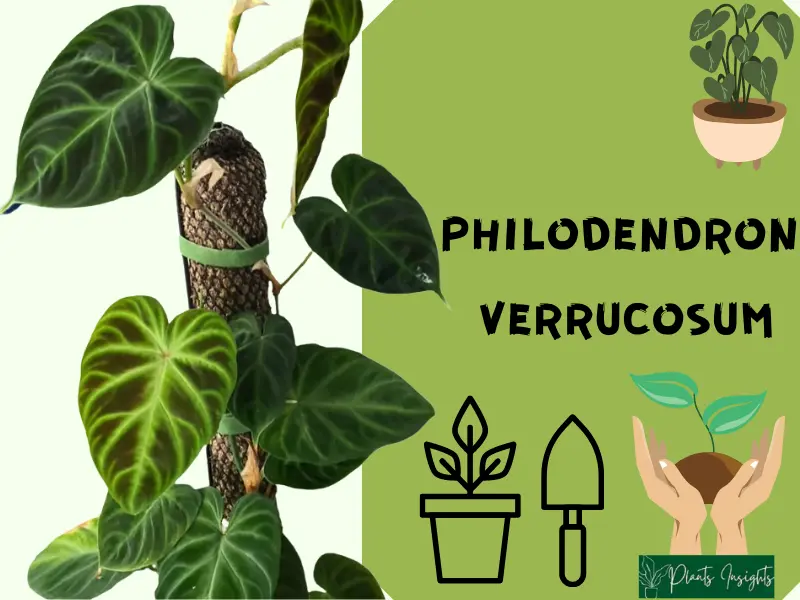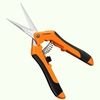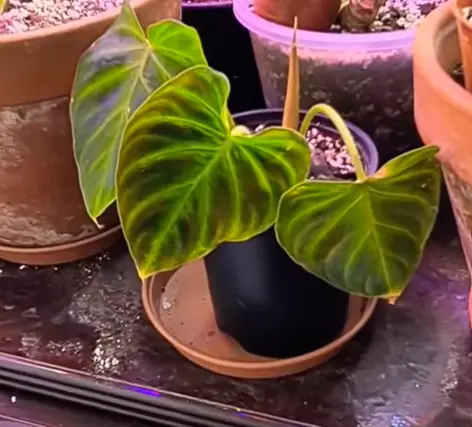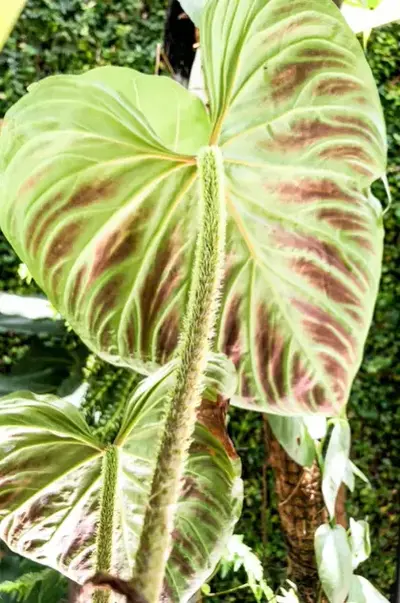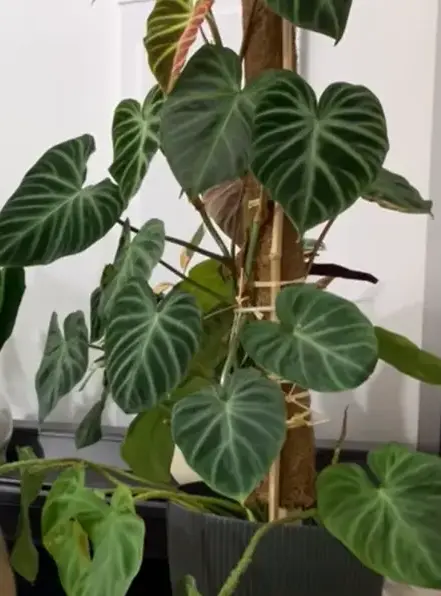The Philodendron Verrucosum is a show stealer and one of the most stylish of all Philodendrons featuring stunning, velvety, dark-green heart-shaped leaves with bright, light green veining. The underside of their leaves colored a faded burgundy between the veins, showcasing their adaptability to their native tropical environments.
The Philodendron Verrucosum is a flowering hemiepiphytic climber of the Araceae family. This tropical plant is native to Central to South America in Costa Rica, Nicaragua, Panama, Colombia, Ecuador, and Peru. This beautiful and sought-after Philodendron grows in a pre-mountainous rainforest canopy. It is a lovely climbing container house plant that is little fussy and requires precise attention.
Closely-Related Allied Species: Philodendron Florida Ghost, Philodendron White Knight, Philodendron Mamei, Philodendron Spiritus Sancti, Philodendron White Princess, Philodendron Moonlight, Philodendron Squamiferum
Essential Products
Habitat & Ecology
| Botanical Name: | Philodendron Verrucosum |
| Family Name: | Araceae |
| Other names: | Ecuador Philodendron |
| Plant Type: | Foliage, vine, large |
| Origin: | Ecuador, Central America, Costa Rica |
| Color: | Velvety, dark-green heart-shaped leaves with prominent veins |
| Height: | Avg. Up to 4 Feet |
| Humidity: | High humidity (60-90%) |
| Temperature: | 65-80°F (18-26°C) |
| Light Need | Moderate, indirect light |
| Status | Rare |
How do You Care for a Philodendron Verrucosum?
Philodendron Verrucosum loves the terrarium environment due to its warm temperature and humidity need. Philodendron species exhibit variable leaves; not every specimen’s leaf will always appear the same. You may find different variants of Philodendron Verrucosum exhibiting a slight variation in leaf color and shape depending on the region.
Is Philodendron Verrucosum Easy to Care for?
Philodendron Verrucosum is actually a bit challenging Philodendron to take care of for some people. However, if you can mimic the native environment, these Aroids reward you with beautiful, huge velvety leaves. Please continue reading our guide to learn how to take care of this beauty.

Bringing the Plant to Home
Philodendron Verrucosum is prone to pest infestation such as Mealy bugs. Especially if you are growing this plant indoors, its leaves tend to attract Spider Mites. Therefore, when you bring this plant home, keep this plant in quarantine for two weeks and inspect for pests before putting this plant with others.
Moreover, this plant may take time to acclimatize. Therefore, in the beginning it may shed a few leaves and may not thrive at the start. But after a couple of weeks, it will get used to its environment and watering habits. They’re habit creatures and don’t like being moved around. They may fuss a little bit or shed a few leaves whenever you move them.

Growth
In terms of the morphology, it has got very dark leaves with a tiny bit of velvetiness, and when the light hits this plant at the right angle, there’s a slight silver iridescence which is very, cool!
It’s got very strong veins. Dark leaves contrasted with light-colored veins, and when you look at the back it’s got a lot of purples, and it seems like it’s been burnt- a really interesting-looking plant. The best thing about it is that the petiole (pubescence) is fuzzy and hairy. It occasionally flowers in the form of a pink and white Spathe and Spadix. The Spadix can produce tiny flowers.
Young Verrucosum or new exhibits lighter coloring, the leaves’ color deepens to dark green as the leaf or plant matures. The faded burgundy color underside of the leaves also appears with age. Moreover, the leaves can grow up to 2 feet tall as the plant matures, conditioning the moss pole for support.
There is a misconception about the plant length that they can grow up to 3 or 4 feet tall. But infact, Ecuador Philodendrons are not limited in size if growing under ideal conditions. The limited length is probably because collectors grow these climbers in containers, limiting them from growing to their full potential.
Is Philodendron Verrucosum a Climber?
Like Philodendron Florida Ghost and S.Sancti, this plant is also a hemiepiphytic, meaning they start their lives as epiphytes, clinging to other trees and sending roots downwards to make contact with the ground. They like to grab onto something and climb up, producing enormous velvety leaves up to 90cm (3 feet) tall. We highly recommend using a moss pole to give this plant support if you want this plant to produce significantly huge leaves.

Light Requirement
This plant wants medium indirect sunlight. I noticed that when you give it a little bit of bright indirect light, it does curl up a little bit. This plant thrives in medium to bright indirect sunlight. Never give it direct sunlight; it may burn the leaves. I burnt one leaf of my Verrucosum from direct sunlight. My plant only got a little bit of direct sunlight for a few minutes or even an hour, and it just got burnt. Therefore, be mindful and never leave your plant in direct sunlight.
Keep this plant close to a bright window, and if you start seeing the leaves burning or bleaching, slightly bring it back. For this plant, I suggest giving it more light until you figure out what light level it needs rather than starting it on lower light and slowly moving it to brighter conditions. If the bright light sacrifice the beauty of a leaf or two in terms of crisping, burning, and yellowing the leaf, you need to move it a bit away from there.
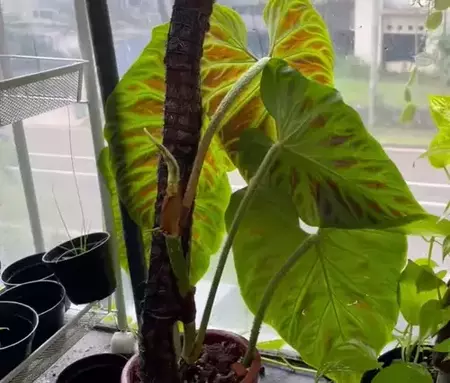
We recommend placing this plant in an east-facing window where it can get bright indirect light for most of the day and some direct sunlight in the morning. Remember to face the foliage towards the window (facing towards the light) rather than facing towards you. This plant grows better when facing outside rather than into the room.

Soil Requirements
Philodendrons prefer a well-aerated, porous and well-draining potting mix. Using a suitable substrate for this plant is a critical factor in its growth and survival. Aracaea family epiphytes roots need aeration- a direct airflow to the roots rather than a dense potting medium. Use a light Aroid potting mix with chunky ingredients, and a pot with suitable drainage holes is recommended for this plant.
The potting mix needs to drain excess water quickly while retaining the moisture. However, you can make your own potting mix for Philodendron Verrucosum by following this recipe;
Verrucosum prefers slightly acidic soil and the ideal pH level is between 5.1 to 6.0. An ABG mix and PON are excellent substrates for Philodendrons kept in terrariums since it has a lot of water retention, excellent drainage and resist compaction.
Avoid sandy or dry soil as well as muddy or damp ones, as this plant doesn’t like such medium.

Potting
Unlike other Philodendrons, Verrucosum does not produce a vast root system. It would be best to use a pot with drainage holes for this plant.
Usually, Philodendron Verrucosum needs re-potting every 1-2 years. Please do not use a big or deep pot as it may make the medium dense and will not let air flow to the roots. When the root starts to grow out of the drainage holes or your plant is root bound, you need to re-pot it.
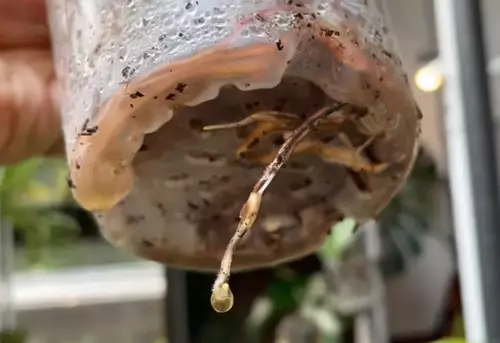
You can look for signs to determine if your plant is rootbound, such as roots coming out of the drainage holes, stunted growth or if the roots are all in one colossal coil around the soil.
Re-Potting
Follow the following steps to re-pot your plant.
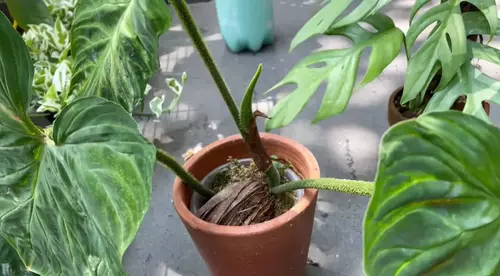
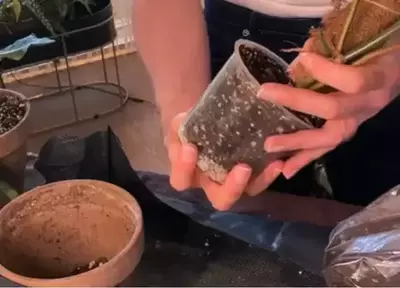
Note: When you mount the plant up a moss pole, you want to let the aerial root kiss the moss pole so that humidity or some misting will help the roots grow into the moss pole, which will encourage more significant and giant leaves ahead.
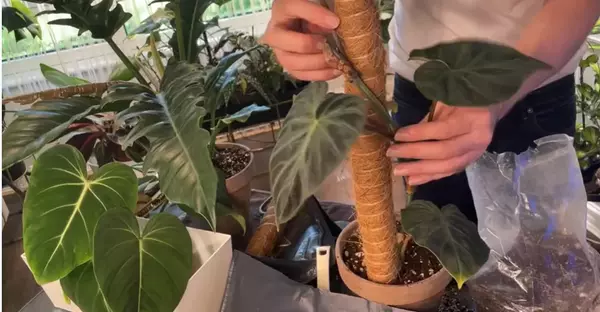

How Often Should I Water ?
Philodendron Verrucosum is one of the Philodendrons that doesn’t like going entirely dry because of their native environment of tropical Ecuadorian jungles. Therefore, we recommend watering it just on the cusp between moist and dry. Using a moisture meter would generally be a good idea to determine the soil dryness.
In case Verrucosum cutting is in PON, you don’t need to worry much as PON is a bit more forgiving with under watering and over watering. PON is a go-to soilless medium for many plant fans as it contains fertilizer and is pH balanced.
The watering frequency for this plant depends on weather, temperature, humidity, and exposure to the sun. On average, you may need to water once or twice a week in the spring and summer. However, the plant is dormant during winter, and watering once every two weeks would be sufficient.
The leaves may droop if the soil dries completely between watering. When the soil is 80% to 90% dry but moist, then water it. You can use your finger to monitor the moisture in the soil. Give this plant a good drink of water until water starts trickling out of the drainage holes.
Be careful not to water this plant while the soil is still damp as they are prone to root rot. The root rot causes the yellowing of leaves and eventually can cause the death of the plant. If you notice yellowing of leaves around the edges , it is an indication of over-watering.

Similarly, the complete dryness of soil during watering may cause the roots to wither. Therefore follow the watering schedule. Verrucosum thrives in well-drained, porous and moist soil.

Humidity and Temperature
Ecuador Philodendron is native to Central and South America, which has warm, humid weather. Therefore this plant thrives best in places with temperatures above 68°F (20°C) and a minimum of 60% humidity, like the rainforest. This plant can be grown outside in hardiness Zone 9b-11 and if the temperature drops below 40 °F, bring the plant inside.
Keep this plant away from cold windows or A.C vents as it may cause stunted growth. Interestingly, Philodendron Verrucosum grows faster in the winter when the temperatures are consistently in the range of 15.5 to 21 degrees C (60 to 70 F).
Verrucosum has thin velvety type leaves, so they don’t want to be in low humidity. They thrive in 70%- 80% humidity. Since most house hold has humidity around 50% which is not enough for this plant. It would be best to give it extra humidity, but don’t mist the plant leaves or hose down the leaves while watering because when you shower the leaves, that may invite bacteria and fungus onto the leaves.
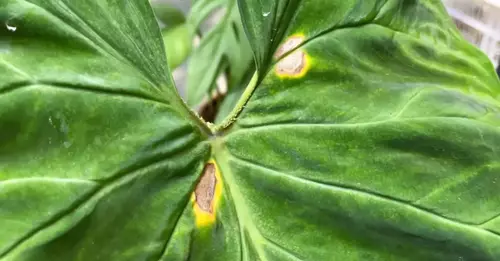
You can use a plant humidifier or a pebble trays filled with water to increase the humidity in the surrounding. Moreover, gathering the house plants in a corner also increases the humidity due to the transpiration of the leaves. You can also leave your plant in the bathroom for high humidity. Keeping the Verrucosum in a terrarium environment to provide high humidity lets it thrive. Using a Hygrometer may help you monitor the humidity level.

Fertilizer
I do fertilizers for this jungle baby with some organic plant food. Lightly and I dilute everything, whether it’s a chemical or natural fertilizer. You need this plant to grow foliage. Therefore, feeding any Nitrogen-based fertilizer once a month during spring and summer will increase the growth. However, be careful not to feed too much as it will scorch the plant leaves.

Philodendron Verrucosum Propagation
Philodendron Verrucosum’s leaves may fall off as the stem grows, leaving an empty vine with few leaves on the top part of the plant. To make your plant bushier, you may need to propagate this into multiple plants and can pot the propagated cuttings back into the mother plant pot.
Verrucosum is a relatively easy Philodendron to grow and a fairly easy Philodendron to propagate. Philodendrons can be propagated in multiple ways, but the most effective are as follows;
Stem cuttings:
Stem cutting is the most effective and common way to propagate Philodendrons such as Philodendron Florida Ghost and Philodendron Spiritus Sancti. Philodendron Verrucosum is an epiphyte, and its aerial roots make it easy to propagate through stem cuttings having a node.
Follow the step-by-step Philodendron Verrucosum propagation:
Choose the top part of the stem with a leaf or two with a growth point or node for propagation. Please ensure to include at least one node.
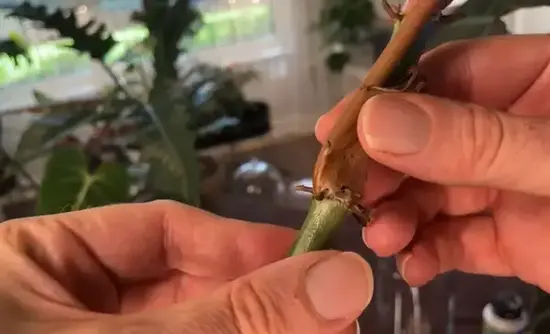
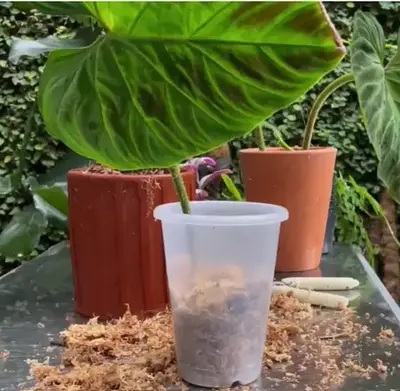
Water propagation:
It is another way to propagate the Philodendrons, but it may take a while for cuttings to root. You can place your Verrucosum cutting in a water-filled glass or jar. Please ensure the node of the cuttings dips into the water to push new growth. It may take 2 to 3 months for nodes to grow roots.
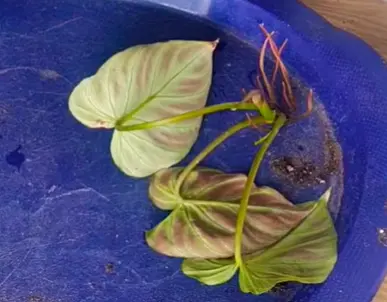
Keep these cuttings in medium light and high humidity for successful root growth. Once the cuttings establish strong roots, you can pot the cuttings into sphagnum moss or potting mix to start as new plants..
Air Layering:
This is one of the most effective propagation methods for Philodendrons. In this method, you try to grow the roots from the nodes of your future stem cuttings.

Follow the following steps for air layering
Wet Stick Propagation:

You can propagate the stem cuting with a node and dried aerial roots into sphagnum moss with the growing eye facing upward. Please ensure not to bury the cutting. You can cover the pot with cling wrap to provide extra humidity, but you don’t need to water it as sphagnum moss already has moisture. In 2 to 3 months, it will root and shoot some new leaves. Spring and Summer are the best seasons to propagate Philodendron Verrucosum as the plant grows active.
Is Philodendron Verrucosum a Fast Grower?
I found this plant as an easy aroid to re-root, and propagated multiple cuttings from one mother plant. They were fast to propagate and rooting system was robust. They are pretty fast to grow.

However ,in my experience, it’s not a fast Philodendron to propagate; if you propagate the Verrucosum from very mature chunks. If there is a leaf and a bit more of a succulent aerial route, the stem cutting roots a bit faster.
Interestingly the cutting pushes out a leaf before it pushes out roots. When the stem is very mature and thick, there’s a lot of energy in that stem to both push out a new leaf and then push out roots but doing it is in that order, so leaf first and then roots without stressing out plants too much.
Seeds
Philodendron Verrucosum seeds can be used for propagation, but the success rate is minimal. It is hard to collect Aroid seeds as they bloom rarely. To collect the seed, you need to pollinate the flowers first. It’s a hassle to produce the seeds; therefore we recommend stem cutting and air laying for propagation

Pruning a Philodendron Verrucosum Plant
Philodendron Verrucosum is a climber plant that likes to grow on a moss pole. If you don’t cut the Philodendron Verrucosum, its stem may grow thin. Moreover, the plant can become very leggy, and the petioles become stringy. Hence pruning few petioles encourage new growth. Take a sterilized shear or sharp pair of scissors to cut above the node. Be careful not to cut through the growing point.
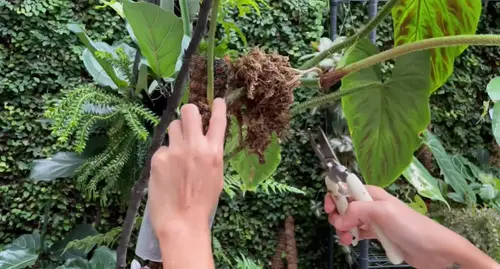
You may put that cutting into peat moss to propagate. Once the roots are established, you can plant them again with the parent plant to make your plant bushier. If you find any yellowing or dying leaf, prune it with a shear or a pair of scissors.

Is Philodendron Verrucosum pet friendly?
No, Philodendron Verrucosum is toxic to human and pet animals due to higher levels of calcium oxalate crystal. Keep the plant away from pets and children.

Common Problems
Pests
These plants are spider mite magnets. We suggest always making sure whenever you’re watering them to check both the front and the back of the leaves as they will get spider mites like the drop of a hat. I would say that this is as susceptible to spider mites as most Alocasia tend to be. However, I have noticed in my experience from some of the Verrucosum I’ve propagated in PON that I have not struggled with spider mites once.
Another pest to keep an eye out for is mealy bugs, and they generally aren’t that difficult to treat, but they can be a bit more of a challenge with the Verrucosum. Because in my experience, the mealybugs attach themselves to where the petiole attaches to the leaf and is generally the fuzziest part of the petiole, making it very difficult to remove or even spray them down without potentially damaging some of that lovely hairiness on the petioles.
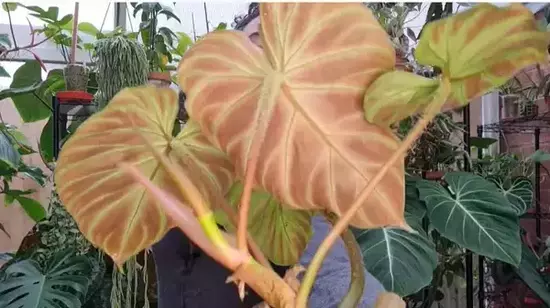
However, I don’t generally hear about mealy bugs too much with this plant, but my Philodendron Verrucosum struggled with it. Verrucosum is a beautiful plant and sometimes, if it gets too many pests, treat the pests , cut it down, propagate it, and get new plants to start all over again.
Common Problems
Bacteria and Fungal Spots
Old leaves may have bacteria and fungal spots when stressed, especially when the plant is putting out new leaves. Moreover, the velvety leaves may get gnats or fungus in case of overhead watering. The leaves don’t like to be mist.
When kept outside, they may attract ants as they produce Extra Floral Nectaries. You might not need to worry as the plant does this as a defense mechanism against pests.
Root Rot
The plant is susceptible to root rot if not potted in a suitable substrate. The dense and damp medium causes root rot, resulting in the yellowing of leaves. An inconsistent watering schedule also causes drooping and yellowing of leaves.
Long and leggy stems
The plant may have long, thin stem if not mounted to a moss pole. Also, low light may cause the thinning of the stem as the plant tries reaching out for more light. You can move your plant to a brighter place. Moreover, if not pruned, the plant may get leggy.
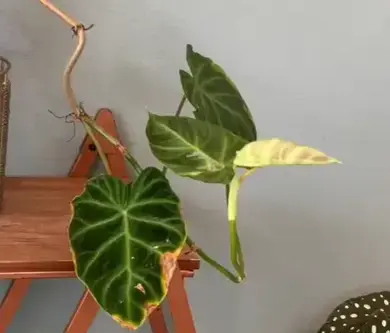
Brown leaves and edges
The plant may have brown leaves or edges due to dryness in the air or underwatering. You need to monitor the soil’s dryness and water it before getting completely dry. Moreover, use a humidifier to increase the humidity in the surrounding.
Conclusion
Philodendron Verrucosum is a fast grower ,eye catching house plant. Although it is bit pricy as compared to other house plants but with proper care it will reward you with stunning foliage . Moreover , you can multiply this plant as the propagation is very easy.

